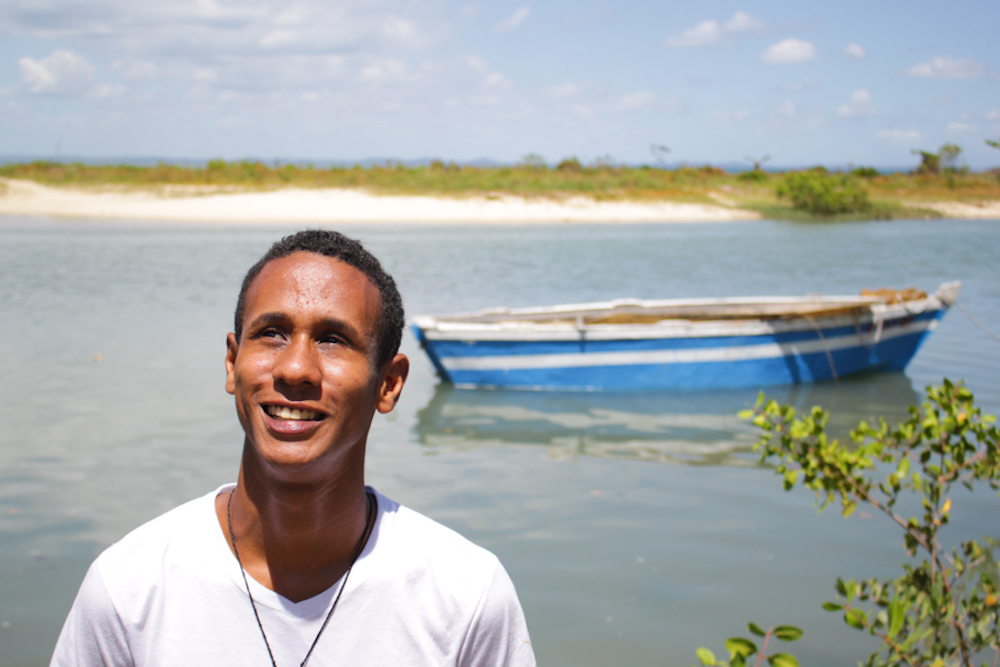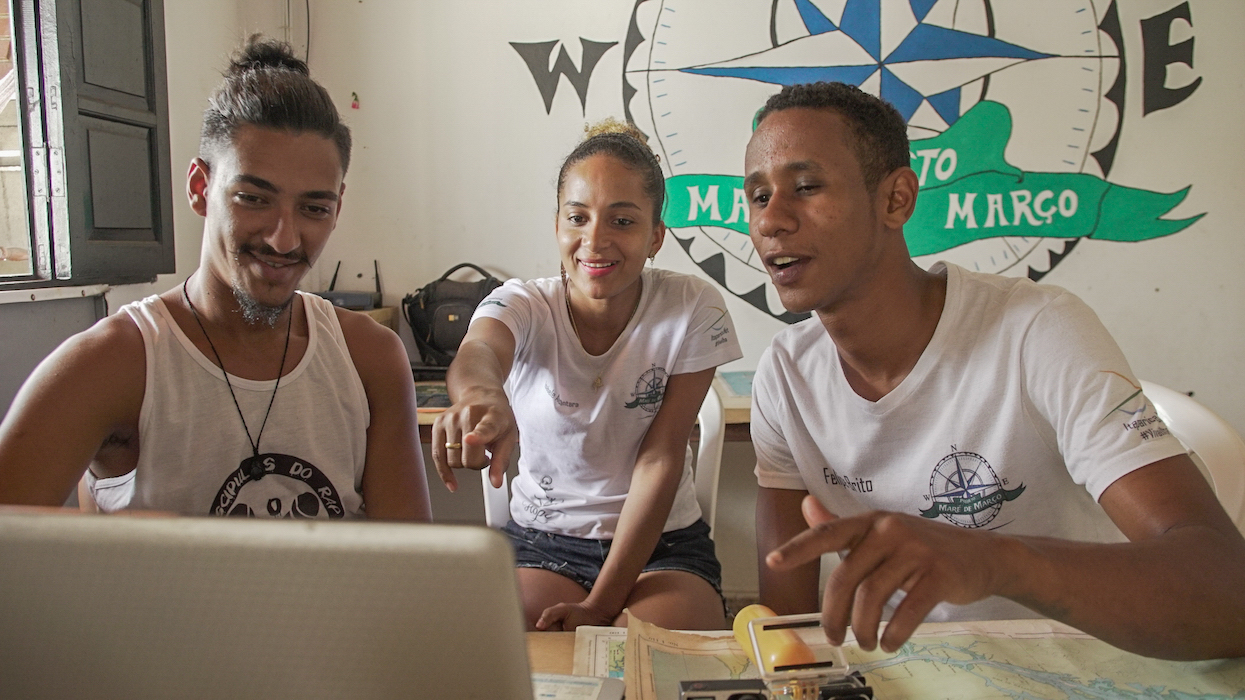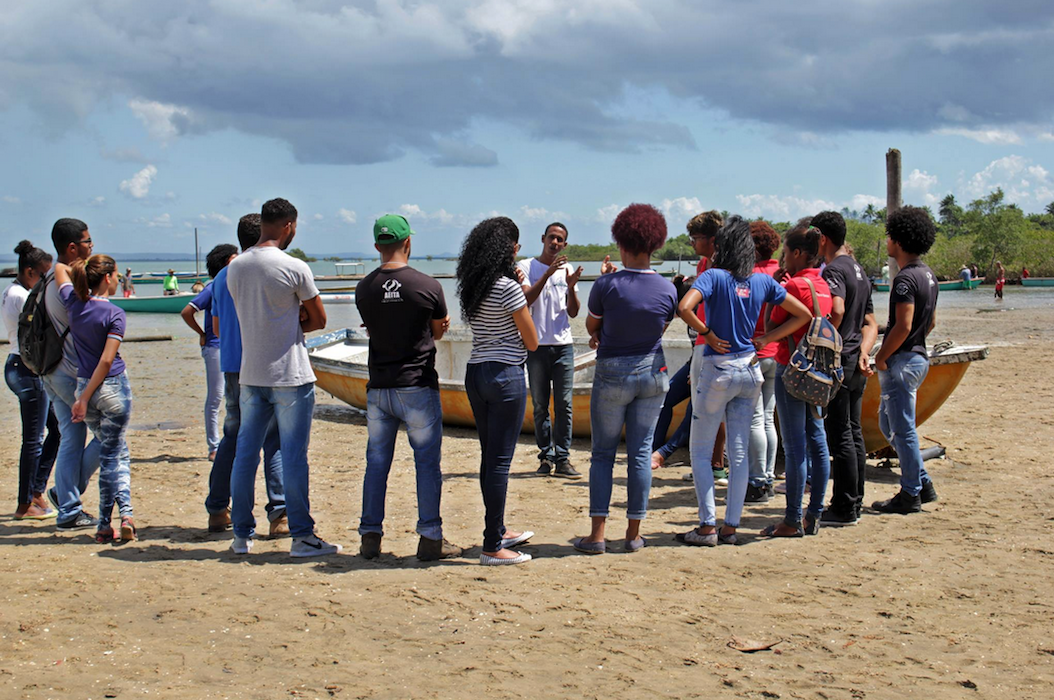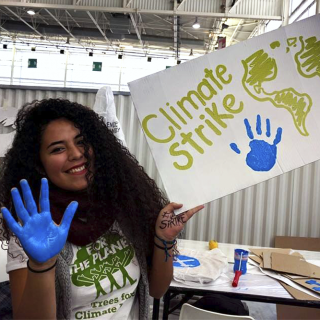A fisherman’s grandson, Felipe Brito, 25, inherited his passion for the sea from his family. He learned how to dive with his father and used to refuse invitations to play ball with his friends, instead exploring the beauties of the place where he was born: Itaparica Island, Bahia.
Brito grew up hearing that Itaparica was “a land that once had everything”. The island, the largest in Todos-os-Santos (All Saints) Bay, has long suffered from environmental and social degradation. But he has never accepted the belief that the glories of Itaparica would be forever relegated to the past.
In 2015, he resigned from his job at a telecommunications company in Pernambuco, where he was responsible for managing fiber optic networks in the state. Brito recalls, “I was far away from everything I most loved. Far from my family, nature, and Itaparica.” He invested his severance pay in photo and video equipment, including an underwater camera that would allow him to reveal the sea of his childhood to the world.
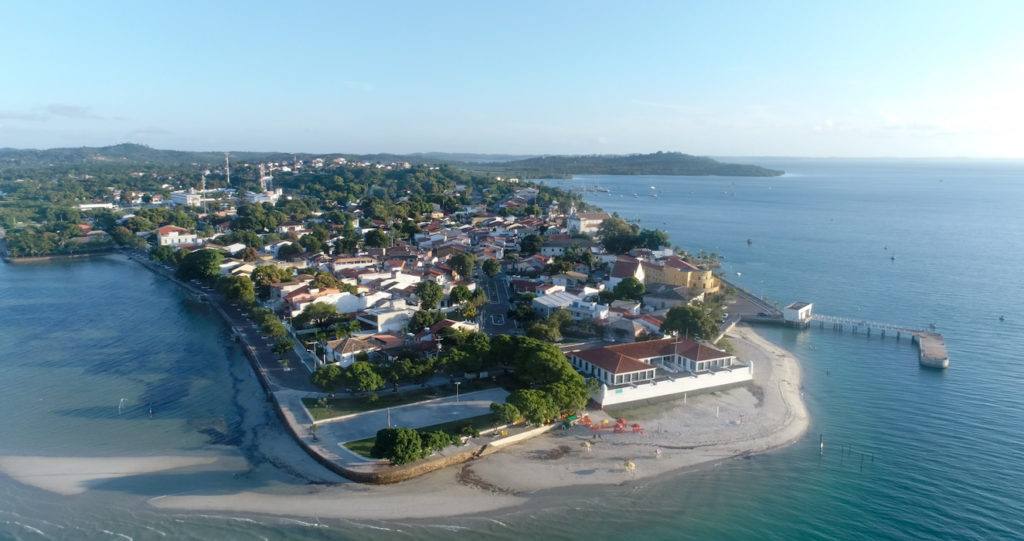
Itaparica is an island of 239 square kilometers (149 square miles), and is home to 55,000 people (Gabriel Teixeira/Believe.Earth)
MEETING NETWORK
Once he started going out in his boat to photograph the bay, Brito caught the attention of his friends, who began helping him out in any way they could, whether with money for fuel, or photo and video assistance. Soon they formed a group of 12 young people with a purpose: the Maré de Março socio-environmental project.
The audio-visual material was used to encourage ecotourism, with information about trails and places to practice sports. It became part of a map showing points of interest around Todos-os-Santos Bay, currently available on Itaparica.net, a collaborative portal. “The goal was never to sell tour packages,” says Brito. “We want to encourage our fellow residents to notice the potential of Itaparica. We want to stimulate entrepreneurship in the community.”
The activist regularly visits fishermen, shellfish gatherers and craftsmen’s associations to share suggestions that will improve their work and restore those communities’ self-esteem. “Maré de Março allowed me to see the reality,” says Isabele Alcântara, a volunteer with the project. “Now, I’m 26 and aware that we must preserve the planet.”
The group has received no public funding and does not have its own office. Compared to many organizations, the resulting improvisation lends the initiative a less institutionalized, more genuine feeling. “We don’t want to be an NGO with a company’s face, nor a company with an NGO’s face,” says Brito. “We are a network of encounters.”
One of Maré de Março’s most significant works is under development in Medo Island, one of the 56 islands that make up the bay’s archipelago. Medo has been an ecologically-protected area since 1991. The word “Medo” means “fear” in Portuguese, a name that derives from Portuguese settlers, because of the many bloody conflicts on the island between the settlers and the Tupinambá Indians. Recently, Medo has been afflicted by a serious environmental problem: Marine currents bring a large amount of garbage from all over, but especially from Salvador, to its beaches.
Maré de Março’s team, in partnership with Broto (Sprout) project, a local environmental education initiative focused on planting food and medicinal herbs, began collecting plastics on Medo, which, when recycled, hold seedlings and plants that are distributed free of charge to the island’s residents. “In 2017, we’ve made 100 trips to Medo Island,” says Brito.
- Maré de Março’s team going to Medo Island to pick up trash (Gabriel Teixeira/Believe.Earth)
- John Pitter, Isabelle Alcântara and Felipe Brito of Maré de Março (Gabriel Teixeira/BelieveEarth)
- Brito chats about environmental preservation with students from Itaparica Students’ Association (Maré de Março’s Archive)
- Participants in the Broto (Sprout) project exchanging seedlings (Gabriel Teixeira/Believe.Earth)
THE RESCUE OF HISTORY
Thanks to Maré de Março’s work, historical sites in the region are being discovered, such as the old Ingá-Açu Mill, a 19th-century ruin. Now, their challenge is to get the site, along with another 15 in the area, recognized and listed as protected national historical landmarks. “The official histories have been neglecting some of the main achievements of people from Itaparica,” says Brito.
Working with Associação de Estudantes da Ilha de Itaparica (AEITA), the activist is preparing a book to document the stories official sources do not tell about the island. “It is important that our young people get closer to the past so that they can identify with their home and strengthen their identity and self-esteem”, says Brito, who teaches history in a course offered by the association. “It will be a turning point between what you’ve learned at school, and what has been forgotten and needs to be remembered,” says Adriano Alcantara, vice president of AEITA.
Creating a sense of belonging is one of the main goals of the initiative, since the desire to leave the island is expressed by most of the 400 young people who have so far attended AEITA’s course. “We want to prove that we can live here and have a life of abundance and prosperity: A simple, but more humane life,” says Brito.
